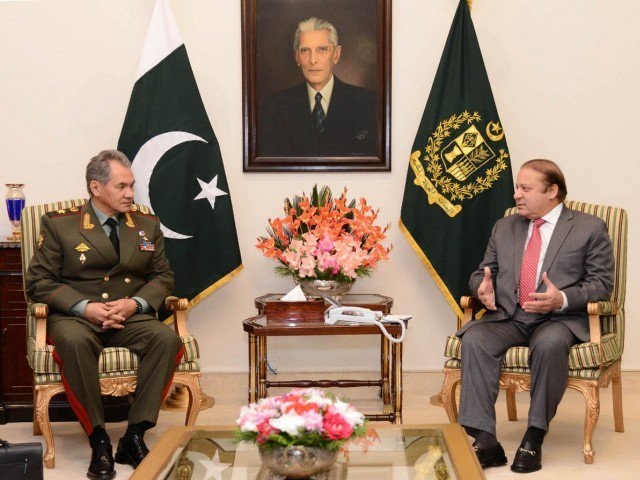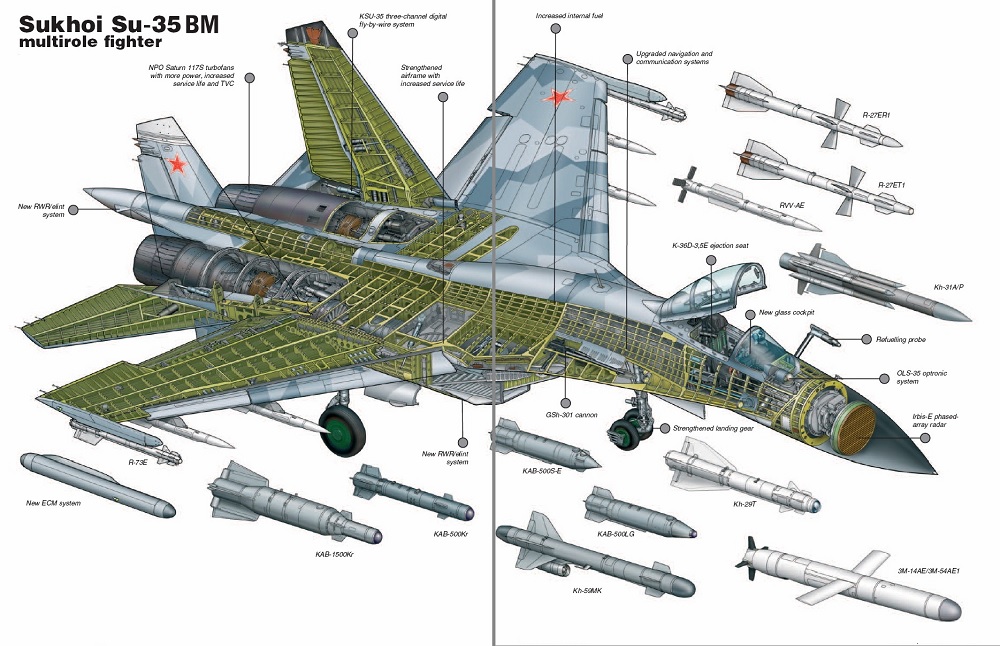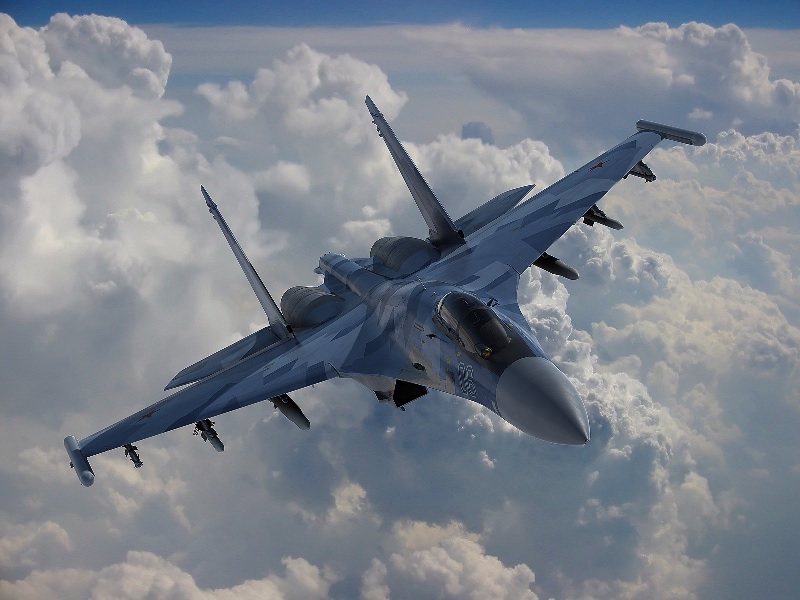By Rakesh Krishnan Simha
Is Russia planning to win friends in Pakistan and lose influence in India? If Russia sells the advanced Su-35 fighter aircraft to Pakistan, it is likely to lead to a major diplomatic rift with India. So why did Deputy Foreign Minister Sergei Ryabkov make the statement that Russia and Pakistan were “negotiating for the delivery of an unspecified number of Su-35 jets” to Islamabad?
The best case scenario is that Russia is keen to ensure India’s return to its fold. As India enters into an increasing number of defence partnerships with Russia’s rivals, particularly Israel and the US, but also France and the UK, Moscow believes two can play the game. It is in this backdrop that Russia has entered into a defence cooperation agreement with Pakistan.
Another reason could be that the judgement of some Kremlin players is clouded by the pressure of economic sanctions and they would like to grab a larger share of the global arms market in which Russia traditionally has been a leader. However, this possibility can be discounted as western sanctions have not had the intended impact. Despite an unfavourable geopolitical climate in 2010-14, Russia accounted for 27 per cent of the global arms market, with approximately $14 billion in exports. In fact, Rosoboronexport, Russia’s weapons export cartel, has orders exceeding $40 billion on its books.
Russia’s offer to Pakistan could, therefore, be in the same category as the forever-on-hold S-300 sale to Iran. Moscow has attempted to squeeze diplomatic concessions from the US and Israel as payoff for withholding the air-defence system from Tehran.
Likewise, the Russia-Pakistan talks over the Su-35 could be a ploy to get India fully on board the PAK-FA stealth fighter programme. The Indian Air Force (IAF) was originally committed to buy 200 of these fifth generation fighters but has since cut back the planned buys to 127. Now India wants to buy these jets directly off the production line from Russia rather than jointly develop the aircraft.
Perhaps the Russians believe that Pakistan’s possession of the Su-35 could scare India to buy larger number of the PAK-FA. India may also be forced to purchase other advanced Russian weapons as sops for blocking the Sukhoi sale.
What can the Su-35 do?
With around 60 MiG-29s and a Su-30 fleet projected at 300, India currently enjoys an enormous advantage over Pakistan. While India would like to maintain this edge, the Su-35 will make a dent – albeit a slight one – in the IAF’s advantage. Although the much larger IAF, with its AWACS force multipliers, would easily tackle the Super Flanker, the presence of a brand new fighter – that is more powerful than anything in the IAF – could cause some anxiety among India’s war planners.
According to Pakistani analyst and former PAF pilot Kaiser Tufail, the Su-35 being a twin-engine aircraft with an extremely long range, would help Pakistan “have a significant and potent presence in the Arabian Sea”.
He adds: “These fighters would also allow unhindered patrolling by naval (long range maritime patrol aircraft), as well as providing top cover to our fleet at sea….Essentially, I see it as a guarantor of maritime security as far as the airspace is concerned.”
To be sure, the Su-35 will be a game changer only if wielded in sufficient numbers and in sync with other air defence assets and missiles. But Pakistan is unlikely to order more than two squadrons of the Su-35 because of the expenses of operating a heavy fighter. The Super Flanker burns as much fuel per hour as an entire Karachi neighbourhood. Plus, twin engines would mean double the maintenance time of a single-engine F-16 in the PAF fleet.
Diplomatic powwow
How serious is the offer? Ryabkov is a junior minister in Russian cabinet. But making an offer to a financially insolvent client – that is also an exporter of terror – is one thing. Making it stick is a different ball game. Approval for the sale will have to go through several rungs of the Russian parliament Duma and the military, plus there are higher powers in Vladimir Putin’s inner circle who can overrule Ryabkov. So there’s every possibility that the Su-35 for Pakistan will end up being the equivalent of the S-300 for Iran.
However, in the highly unlikely scenario that the Su-35 wears Pakistani colours, Russia can say goodbye to its largest buyer. Although Russia was the second largest arms exporter in the world during the period 2010-14, it was less diversified than the US. According to SIPRI, “Three countries; India, China and Algeria; accounted for almost 60 per cent of total Russian exports.” India alone accounted for 39 per cent.
In contrast, the US which led with 31 per cent, had Korea as its top buyer at just 9 per cent. The US therefore had a better spread than Russia.
So without India, Russia’s arms exports will atrophy. And although the likes of Algeria, Indonesia and Malaysia continue to be steady buyers of Russian weapons, the flows to these countries are a trickle rather than a torrent. No country offers Russia such a long-term market as India.
India was also the first international customer for the MiG 29, and in fact expressed interested in it during its development in the early 1980s. Again, the IAF was among the first air forces in the world to induct the Su-27/30. India’s early investment in the PAK-FA project is enough indication of its seriousness in the project.
In the backdrop it seems unlikely Russia will go ahead with ramping defence ties with Pakistan beyond a few helicopter gunships.
Stopping the Kozyrevs
It was under Andrei Kozyrev’s watch that India diversified away from Russia. Kozyrev (Russian foreign minister from 1990 to 1996), who sought close ties with the West, had declared after the Soviet Union was dissolved that the new Russia would no longer give special importance to India and would in fact treat India and Pakistan as equals. So basically, the country that was indirectly responsible for the deaths of 15,000 Soviet lives during the Afghanistan War was preferred by him over friendly India.
Deepa Ollapally of George Washington University writes in the paper ‘Indo-Russian Strategic Relations: New Choices and Constraints’, “Kozyrev relegated India to a secondary role. During this initial phase, which was to last until 1996, India was forced to take the initiative to try to build new bridges to the Duma and utilise earlier Soviet lobbies. India was able to exploit lobbies against Kozyrev’s tilt which had formed in the Russian Federation presidential apparatus. It was aided by such figures such as Vladimir Lukin who called for greater attention to be paid to old allies.”
“However, then Prime Minister P.V. Narasimha Rao had no choice but to diversify India’s security links as its most crucial erstwhile ally continued to labour in confusion and anxiety over its economic and political status, with no clear signal regarding its foreign policy preferences.”
Kozyrev currently lives in Miami where he has acquired money and a nice tan. He slams Putin to the delight of his American backers. The thing India and Russia must do is sidestep or sideline such actors and keep the phone lines open. For, just as there are a few Indian leaders wanting closer ties with the West at Moscow’s expense, there are some Russian leaders who cannot see the importance of having India on their side.
According to Ryabkov, increasing military cooperation between Islamabad and Moscow would not negatively impact Russia’s ties with India. His statements would vindicate Rao’s decision to wean India away from over-dependence on Russia. Compared with Rao, current Prime Minister Narendra Modi belongs to the right leaning RSS, which is pro-American. He is unlikely to treat such an issue lightly.
Source Russia and India Reports


